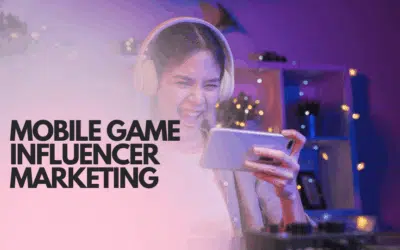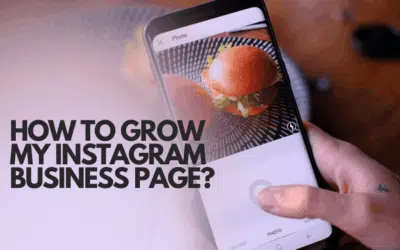Make money with AI influencers
Make money with AI influencer is about building a digital persona that earns money through partnerships, licensing, subscriptions, and products. This guide shows practical models, setup steps, and rules to stay compliant and trustworthy in 2025. If you want a deeper dive into monetization, see Comment les influenceurs gagnent-ils de l'argent ?.
What does the day-to-day look like? It’s a media operation built around a character and a story. The focus is short-form video, regular collabs, and a mix of revenue streams. Common income sources include sponsored posts, affiliate deals, IP licensing, merch, memberships, and paid events. For a hero image, picture a stylish virtual avatar with small icons for ads, shopping, tickets, and badges around them.
Make money with AI influencer starts with a clear definition of the AI persona. This can be a fully synthetic CGI character, an AI-driven speaking avatar, or an augmented human creator who uses AI tools to scale content. The choice matters for licensing and disclosure rules. If you want a primer on how brands view virtual influencers, see Influencer Marketing Hub’s virtual influencers guide (source).
Why brands are investing in AI influencers in 2025 is your quick read on why this model is appealing. It’s about scale, safety, and faster testing of ideas. This section blends data from industry sources and platform guidelines to ground the plan in reality. See Adweek’s coverage of brands using digital characters for examples and context (source), and the New York Times profile on Lil Miquela for a historical view (source).
What is an AI influencer?
An AI influencer is a digitally created persona that publishes content and engages an audience. It can be a CGI character, an AI-driven talking avatar, or a real creator using AI tools to scale work. These personas can be fully synthetic or built on a human likeness with consent and workflow support.
Three common categories exist:
– Fully synthetic visual avatars that live on social feeds and in videos.
– AI-driven virtual spokespeople that speak or chat using text-to-speech and scripted responses.
– Augmented human influencers who use AI tools for voice, editing, and 3D layers.
Labeling matters because it affects monetization rights. A fully synthetic IP can be owned and licensed like a brand asset. A virtual voice may need separate licensing and consent. For a primer on how brands define virtual influencers, see Influencer Marketing Hub’s virtual influencers guide.
Source: Influencer Marketing Hub on virtual influencers. https://influencermarketinghub.com/virtual-influencers/
Why brands are investing in AI influencers in 2025
Brands run experiments with virtual personas for practical reasons. They want scale, 24/7 availability, and predictable content output. AI characters can post daily, respond in multiple languages, and stay on-brand without talent downtime. This helps during launches and seasonal pushes.
Other advantages include fast creative iteration and better brand safety. Synthetic media can be tested in parallel, which speeds up learning and ROI. The voice and style can be tightly controlled, reducing off-message moments.
There are trade-offs. Some audiences value human vulnerability and authenticity, so trust must be earned through transparency and genuine engagement. Still, many brands see a strong test-and-learn upside that improves creative performance and ROI over time. See Adweek’s coverage of brands using virtual influencers (source). For context, read the Lil Miquela profile in The New York Times (source).
Source: Adweek on brand experiments with virtual influencers; NYT Lil Miquela profile. https://www.adweek.com/creativity/brands-are-using-virtual-influencers/ - https://www.nytimes.com/2018/05/30/style/lil-miquela.html
Make money with AI influencer: core monetization streams
Multiple revenue streams work best. Diversify to reduce risk and improve leverage in negotiations.
Sponsored content and brand deals
This is the most visible revenue source. Deals vary from flat fees to bundled campaigns and ongoing retainers. Include clear usage rights in every negotiation and quantify your value with metrics.
- Flat-fee per post or video
- Bundled campaigns (e.g., 3 Reels + 5 Stories + 1 YouTube short)
- Retainers for ongoing content sprints
- Performance bonuses based on clicks or sales
Negotiation tips that protect upside:
– Define usage rights: channels, duration, geography, and exclusivity. Expanded usage costs more.
– Share metrics: engagement rate, views, CTR, audience demographics, and past benchmarks.
– Include line items: revisions, rush fees, wardrobe/scene updates, and approvals timeline.
Illustrative pricing references: nano/micro accounts ($50–$1,500 per post); mid-tier campaigns ($1,500–$20,000); established avatars ($20,000–$100,000+). Source: Influencer Marketing Hub’s influencer rates.
When pitching, show value: the ability to Make money with AI influencer content at scale is what marketers want to test.
Source: Influencer Marketing Hub — Influencer rates. https://influencermarketinghub.com/influencer-rates/
Affiliate marketing and performance partnerships
Affiliates earn a percentage of sales or a fixed bounty. Use unique codes and trackable links, with cookies set in writing. This is a stable income stream before big sponsorships land.
Licensing IP, voice, and character rights
As your character grows, brands may license it for campaigns or voice work. You can license:
– Character likeness for ads and assets
– Voice likeness for videos or interactive experiences
– Specific scripts or story elements
Key legal checklist includes rights granted, duration, territory, exclusivity, sublicensing, and fees. Establish ownership of the character/IP from day one. See WIPO resources for global IP best practices.
Source: WIPO IP resources. https://www.wipo.int/
Merchandising and digital products
Sell physical goods (apparel, posters) and digital items (wallpapers, art packs). Test demand with mockups and pre-orders. Partner with fulfillment for small batches. For digital goods, sell in-platform items or downloadable packs.
Fan subscriptions and memberships
Offer memberships on Patreon, YouTube, or Discord. Provide exclusive arcs, early drops, and member-only Q&As for steady monthly income.
Virtual events and appearances
Host paid livestreams, Q&As, and branded cameos. Use tiered tickets for access, with VIP options for small-group time.
Content licensing and marketplaces
License clips, voice packs, or avatar poses on marketplaces. Start with watermarked previews and clear license tiers (web vs. broadcast).
Sample monthly revenue scenarios (illustrative):
- Indie avatar (30k followers): one sponsored Reel ($600) + affiliate ($0.80 per click x 1,000 = $800) + 120 subs at $5 = $600 → approx. $2,000 this month.
- Studio avatar (400k followers): two sponsored shorts ($4,000 each = $8,000) + licensing ($3,000) + affiliate (2,500 clicks x $1 EPC = $2,500) + 700 subs at $6 = $4,200 → approx. $17,700 this month.
Source: Influencer Marketing Hub — influencer rates; a comparison of macro trends and ROI benchmarks (2024 Benchmark Report).
Simple monthly scenario: a mid-tier avatar with 120k followers. One 3-piece campaign ($6,000) + affiliate (1,800 clicks x $0.90 = $1,620) + memberships (350 x $5 = $1,750). Total ≈ $9,000–$9,400 before costs.
Source: Influencer Marketing Hub — how much influencers make. https://influencermarketinghub.com/how-much-do-influencers-make/
How much do AI influencers earn?
Short snippet-friendly ranges:
– Nano/micro (1k–50k followers): about $50–$1,500 per sponsored post.
– Mid-tier (50k–500k): about $1,500–$20,000 per campaign.
– Established (500k+): about $20,000–$100,000+ per major campaign.
What you earn depends on follower size, platform mix, niche, engagement, brand fit, and rights. IP licensing and merch can boost earnings beyond sponsorships. Pair sponsorships with affiliates, memberships, and digital products to stabilize income.
Source: Influencer Marketing Hub — How much do influencers make? and influencer rates. https://influencermarketinghub.com/how-much-do-influencers-make/ - https://influencermarketinghub.com/influencer-rates/
Illustrative tiers reinforce how results vary by scale and platform mix. See macro trends and ROI benchmarks in the 2024 Influencer Marketing Hub Benchmark Report.
Source: Influencer Marketing Hub — 2024 Benchmark Report. https://influencermarketinghub.com/influencer-marketing-benchmark-report/
How to start AI influencer: step-by-step blueprint
Follow these steps to go from zero to a monetizable virtual persona. The aim is digital persona monetization with a sustainable pipeline.
Step 1 — Define niche and persona
Clarify who your character helps. Pick a focused niche (e.g., budget fashion, fitness form tips, productivity hacks, indie game reviews). Draft your persona with name, age-range, appearance, and backstory. List audience avatars (who they are, what they want, where they hang out).
Anchor your plan with a one-liner: Make money with AI influencer content in an ethical, repeatable way. For more on personas, see our outreach templates in our related post. See step templates.
Step 2 — Build avatar and voice style
Choose photoreal or stylized. Stylized is easier to maintain and safer for uncanny valley. Export formats: 1080×1920 vertical for Shorts/TikTok; 1080×1080 for carousels; 4K masters for future-proofing.
Voice options: natural TTS, voice clone with consent, or a human actor. Get written permission for any voice likeness and log sources. Useful tools: Synthesia, D-ID, Midjourney, Stability AI, Adobe Firefly, Ready Player Me.
Source: Synthesia, D-ID, Midjourney, Stability AI, Adobe Firefly, Ready Player Me. https://www.synthesia.io - https://www.d-id.com - https://www.midjourney.com - https://stability.ai - https://www.adobe.com/sensei/generative-filters/firefly.html - https://readyplayer.me
Step 3 — Content pipeline and posting cadence
Keep a steady rhythm: at least 3 feed posts per week and 3–5 Stories/Shorts. Have one repeatable weekly series. Repurpose content to scale quickly.
30-day starter calendar (weekly themes):
– Week 1: Origin story + niche primer
– Week 2: Product how-tos + 1 collab
– Week 3: Story arc twist + community Q&A
– Week 4: Mini-challenge + reveal + member teaser
Step 4 — Growth and community engagement
Partner with creators in your niche. Use 3–5 relevant hashtags. Test small paid boosts ($200–$1,000/month) on top posts. Have a moderation plan to maintain a friendly tone and disclose synthetic nature.
Step 5 — Outreach and brand partnerships
Use a simple email template and track metrics: average views, engagement, audience demo, and recent examples. Include a clear fee and rights package. Consider an influencer media kit to speed outreach.
Outreach sample (template guidance is in our bookshelf): Influencer media kit guide.
Step 6 — Legal and disclosure setup
Register IP rights, secure voice likeness consent, and log licenses. Build a DMCA process and keep creation logs. Add FTC-style disclosures on paid posts and note the virtual persona openly.
Disclosure copy (paste-ready):
– “Sponsored: Paid partnership. This character is a virtual persona.”
– “Ad: We received compensation for this post. The persona is digital.”
– “Includes affiliate links. As a virtual creator, I may earn from qualifying purchases.”
Close this before brand work goes live. Can you really make money with AI influencer if you skip compliance? Not sustainably.
Tools, platforms, and resources for AI influencers
Choose tools that fit your budget and style. Here is a focused starter kit with roles and quick pros/cons.
Avatar and video generation
- Synthesia — Talking avatar videos; scalable explainers. Pro: polished; Con: may look template-like if overused.
- D-ID — Talking-head synthesis and lip-sync; Pro: fast; Con: prompts must be careful to avoid artifacts.
- Ready Player Me — Cross-platform 3D avatars; Pro: interoperable; Con: stylized look may not fit photoreal needs.
Image generation and styling
- Midjourney — Stylized art; Pro: strong aesthetics; Con: prompt iteration needed.
- Stable Diffusion — Flexible pipelines; Pro: highly customizable; Con: setup can be complex.
- Adobe Firefly — Brand-friendly generative features; Pro: great within Adobe ecosystem.
Video editing and lip-sync
- Runway — Generative video tools; Pro: fast ideation; Con: compute costs for advanced runs.
Distribution platforms
- TikTok, YouTube Shorts, Instagram Reels — Short-form reach and discovery
- YouTube — Long-form, memberships
- X/Twitter — Real-time conversations and links
Rights and contracts
Start with reputable IP guidance and templates. For complex licensing, consult a lawyer. See World Intellectual Property Organization resources for guidance.
Source: WIPO resources. https://www.wipo.int
Legal, ethical, and EEAT considerations
Compliance is built into the product. Transparency and clear disclosures protect you and your audience. Treat EEAT (Experience, Expertise, Authoritativeness, Trust) as a living asset and show your logs, process, and outcomes.
Disclosure and endorsements:
– Clearly label paid posts and relationships with plain language near the content.
– Follow the FTC’s guidance on endorsements. FTC endorsements.
Platform policies on synthetic media:
– TikTok community guidelines and policy notes for synthetic content.
– YouTube policy on manipulated media and monetization rules.
– Meta/Instagram policies on disclosing AI usage.
Source: FTC endorsements; TikTok guidelines; YouTube policy hub; Meta policies. FTC endorsements - TikTok guidelines - YouTube policy - Meta policies
IP and personality rights:
– Secure voice likeness rights and licenses for third-party assets.
– Define ownership in writing and consider trademarking IP for merch rights.
– Add moral clauses to licenses to protect brand safety.
Ethics and EEAT summary:
– Be transparent that the character is virtual.
– Keep logs and occasional behind-the-scenes content to build trust.
– Focus on credible, audience-first growth and safe practices.
Source: FTC guidance and platform policies. FTC endorsements - TikTok guidelines - YouTube policy - Meta policies
Case studies and real-world examples
Case 1 — Public example: A Lil Miquela–style CGI model. A real-world example shows how brand deals and storytelling can coexist with licensing and steady narrative work. See The New York Times’ profile for early context on this movement and brand engagement. Source.
Lessons:
– Narrative continuity helps campaigns feel native, not just transactional.
– IP clarity enables broader licensing and reuse.
– Pairing with human creators can boost authenticity.
Case 2 — Hypothetical mid-tier avatar (illustrative). Assumptions: 180k followers, 2.5% engagement. Monthly monetization mix:
– 40% affiliate: 3,000 clicks x $1 EPC = $3,000
– 30% subscriptions: 600 members x $5 = $3,000
– 30% sponsored posts: 2 deliverables at $2,250 each = $4,500
Total ≈ $10,500 before costs. This exemplar shows how different streams combine to reach a solid month.
Source: Conceptual scenario; driven by typical benchmarks in Influencer Marketing Hub. https://influencermarketinghub.com/how-much-do-influencers-make/
Metrics and measurement: how to track success
Define KPIs and track monthly. Keep it simple and data-driven.
- Portée et impressions
- Taux d'engagement
- Taux de clics (CTR)
- Taux de conversion
- ARPU (average revenue per user)
- CAC and LTV
- Content ROI
Simple monthly report template:
– Followers, reach, and engagement per platform
– Revenue by stream (sponsors, affiliates, subs, licensing, merch)
– CTR and conversions for top links
– CAC and LTV for subscriptions and products
– Best content ideas and next tests
Measure to Make money with AI influencer content more predictably, not by vibes alone.
Risks, challenges, and mitigation strategies
- Policy changes → diversify channels, keep archives, monitor updates
- Audience trust erosion → transparent disclosures and Q&As
- IP disputes → register rights, clear contracts, provenance logs
- Quality dips → human review before posting
- Monetization concentration → diversify streams and partners
Public resources and guidance on risk management include policy updates and IP best practices. See Influencer Marketing Hub and industry peers for ongoing benchmarks.
FAQ
Q1: Are people really making money with AI influencers?
Yes. Brands have run paid campaigns with virtual personas and creators monetize via affiliates, subs, and licensing. See Adweek’s brand campaigns and Influencer Marketing Hub benchmarks for context.
Q2: Is making an AI influencer legal?
Generally yes if you respect IP, voice likeness, and disclosures, and follow platform policies. Use clear contracts and FTC-style disclosures. See FTC endorsements and WIPO resources.
Q3: Can I actually make money with AI?
Yes. Combine 2–3 monetization streams, publish weekly, and follow the blueprint. Early revenue can come in within a few months with consistent effort.
Q4: How to start AI influencer?
Define your persona and niche, build a reusable avatar and voice, plan a weekly content system, and add monetization from day one. See the step-by-step blueprint above for templates and calendars.
Q5: Can you really make money with AI influencer?
Yes, but it’s not automatic. Success comes from quality content, smart distribution, and compliance. Mix brand deals with affiliates and memberships; add licensing as IP grows.
Conclusion and next steps
Three takeaways to keep handy:
– Build a diversified monetization mix early (sponsors + affiliates + subs; add licensing later).
– Treat IP, voice rights, and disclosures as core infrastructure, not afterthoughts.
– Follow a repeatable content pipeline with weekly themes, then optimize by metrics.
Citations index (unique links; accessed September 2025)
- Influencer Marketing Hub — Virtual influencers: https://influencermarketinghub.com/virtual-influencers/
- Influencer Marketing Hub — Influencer rates: https://influencermarketinghub.com/influencer-rates/
- Influencer Marketing Hub — How much do influencers make?: https://influencermarketinghub.com/how-much-do-influencers-make/
- Influencer Marketing Hub — 2024 Benchmark Report: https://influencermarketinghub.com/influencer-marketing-benchmark-report/
- Adweek — Brands using virtual influencers: https://www.adweek.com/creativity/brands-are-using-virtual-influencers/
- The New York Times — Lil Miquela profile: https://www.nytimes.com/2018/05/30/style/lil-miquela.html
- Synthesia — Tool: https://www.synthesia.io
- D-ID — Tool: https://www.d-id.com
- Midjourney — Tool: https://www.midjourney.com
- Stability AI — Tool: https://stability.ai
- Adobe Firefly — Tool: https://www.adobe.com/sensei/generative-filters/firefly.html
- Ready Player Me — Tool: https://readyplayer.me
- Runway — Tool: https://runwayml.com
- TikTok — Platform: https://www.tiktok.com
- YouTube — Platform: https://www.youtube.com
- Instagram — Platform: https://www.instagram.com
- X/Twitter — Platform: https://twitter.com
- WIPO — IP resources: https://www.wipo.int
- FTC endorsements: https://www.ftc.gov/tips-advice/business-center/advertising-and-marketing/endorsements
- TikTok guidelines: https://www.tiktok.com/community-guidelines
- YouTube guidelines: https://support.google.com/youtube
- Meta policies: https://about.meta.com/policies
Articles sur le marketing d'influence
Des conseils pratiques pour mieux réussir ses campagnes de marketing d'influence
Mobile Game Influencer Marketing: The Definitive Guide for 2026
ContentsWhat is mobile game influencer marketing?How to plan mobile game influencer marketing campaignsCampaign formats & platformsMetrics, measurement, and ROIGovernance, legal, and ethical considerations Mobile game influencer marketing is a core acquisition and...
What is the Most Popular Instagram Niche? High-Engagement Niches
ContentsWhat is the most popular Instagram niche?How the Instagram landscape has evolved in 2024–2025Deep dive by categoryFaceless niches on InstagramHow to evaluate which niche is right for your brand What is the most popular Instagram niche? Short answer: fashion...
How to grow my instagram business page
ContentsWhy growing your Instagram business page matters in 2025How to grow my Instagram business page: setting the foundationContent formats proven to grow an Instagram business page If you’re asking how to grow my instagram business page, you’re not alone. Marketers...






